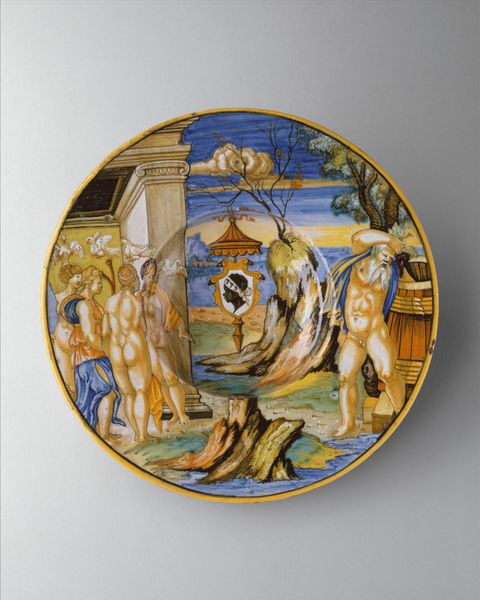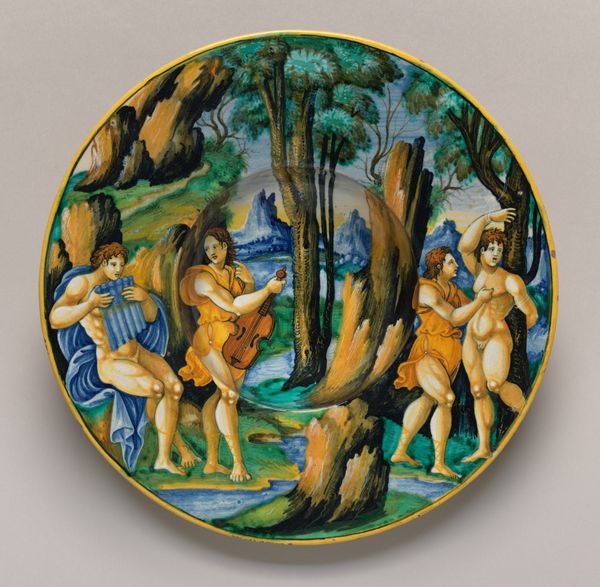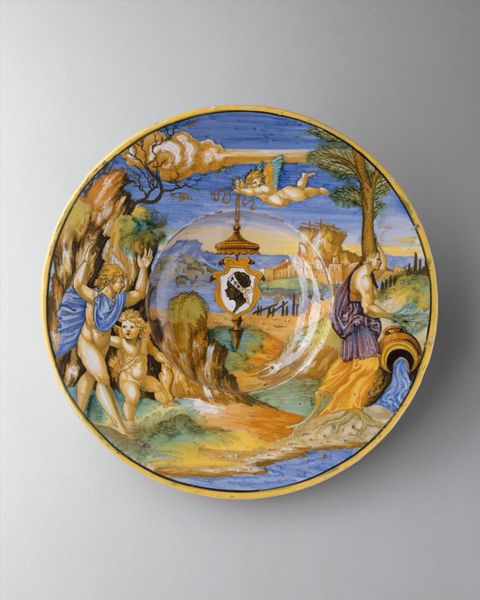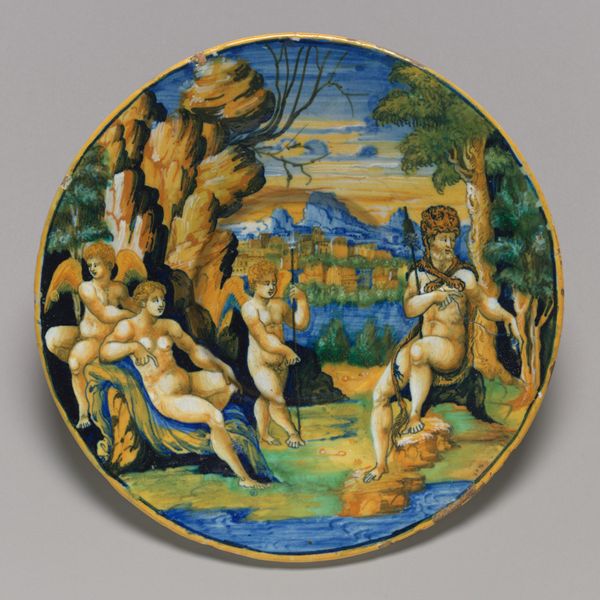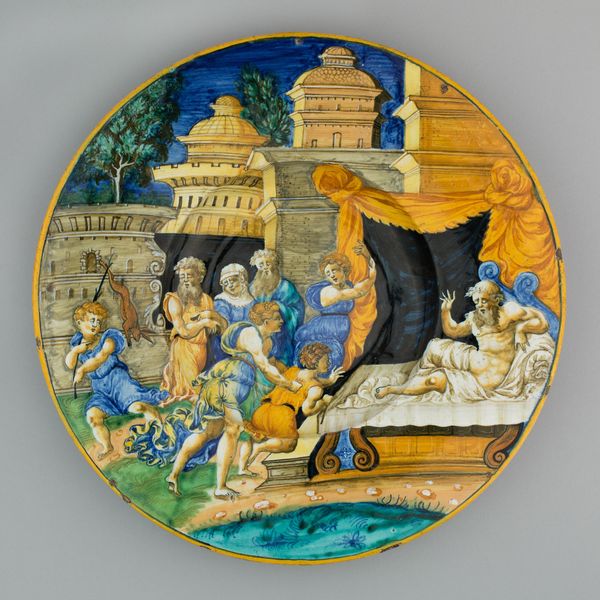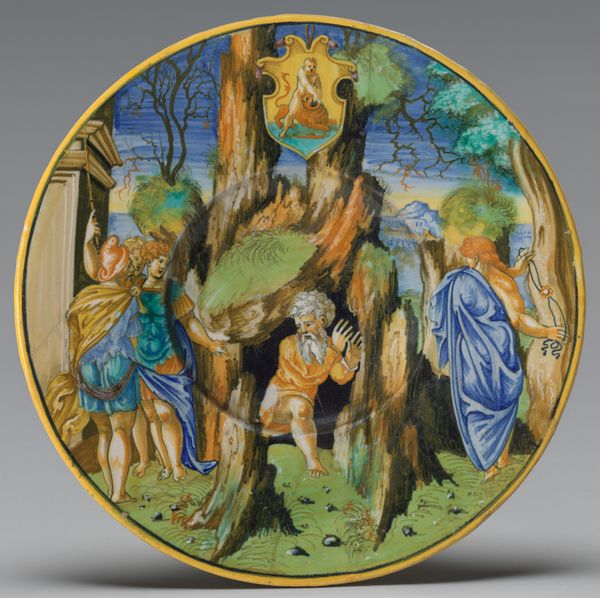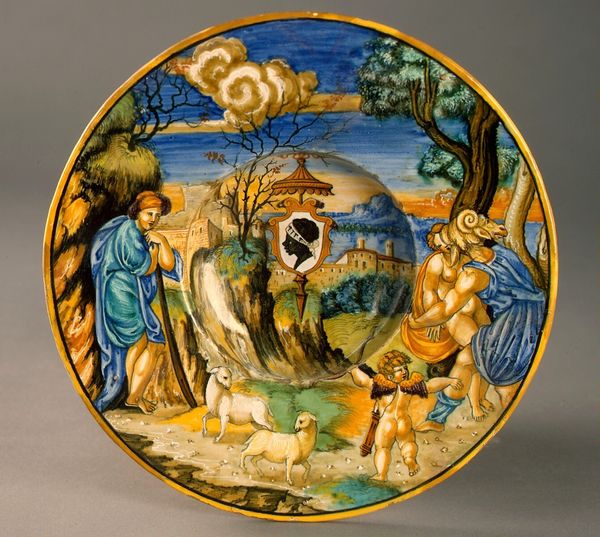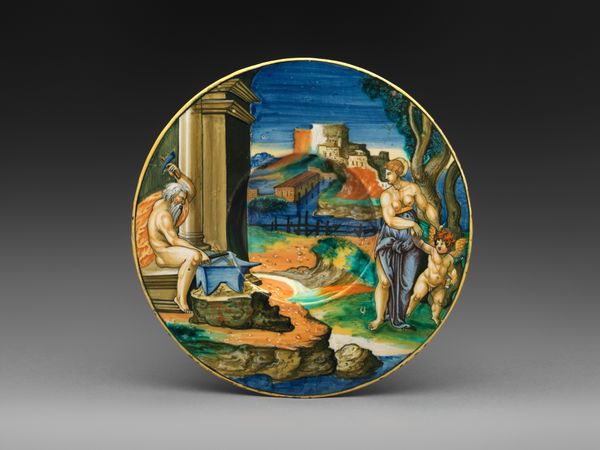
ceramic
#
ceramic
#
figuration
#
ceramic
#
men
#
history-painting
#
italian-renaissance
#
male-nude
Dimensions: Diam. 10 3/16 in. (25.9 cm)
Copyright: Public Domain
Curator: Standing here, one can't help but be drawn to the Italian Renaissance majolica, "Dish," created in 1532 by Francesco Xanto Avelli da Rovigo. Editor: The painting on ceramic, it's quite striking, isn't it? There's a somber mood despite the bright colors... as though they're trapped within a miniature theater, playing out some very sad ancient drama. Curator: Yes, that theatrical quality is key, but I would not call it sad; perhaps dramatic. Xanto Avelli specialized in these narrative scenes painted on dishes, taking inspiration from classical mythology. The artist skillfully translates literary sources into pictorial forms that must feel accessible, not necessarily profound. Editor: So what exactly are we seeing unfold here? Is this Actaeon spying on Diana? Is it a tale of metamorphosis, perhaps, of being turned into an animal because they offended someone's values? Curator: That's definitely the right path. There is no clear concensus of a tale this scene can represent but Ovid's tale about Acteon may be one that comes closest. I am drawn to this depiction since, through time and cultural adaptations, figures become carriers of symbols. The color itself of their garment can point us in certain directions. Editor: You are totally right. I think one should view this piece not merely as a visual delight, but rather as a profound examination into visual art; not just what we see on the surface, but the multiple narratives that resonate beneath it. Even its status as an art object and an everyday object asks, “What story do we want to tell, and for what function?!” Curator: Yes, each viewing unlocks more layers. It reminds me of that endless unfolding— the journey from observer to active participant. I can see now the sadness I initially percieved may be interpreted in several ways depending on how well each narrative fits for each of us. Editor: It’s truly a testament to Avelli's ability, how such a static image continues to resonate and provoke new conversations over all these centuries.
Comments
No comments
Be the first to comment and join the conversation on the ultimate creative platform.


